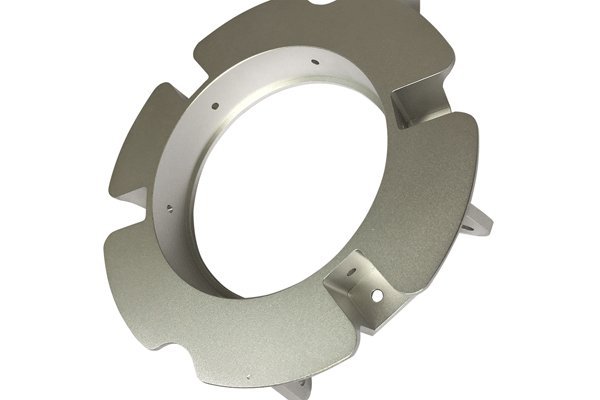In the ever-evolving world of manufacturing, particularly in CNC (Computer Numerical Control) machining, quality assurance stands out as a cornerstone of success. The precision and accuracy of machined parts rely heavily upon the quality of input materials. Thus, material inspection becomes an indispensable part of the CNC machining process. This article aims to delve into the significance of material inspection in ensuring quality assurance in CNC machining, highlighting its benefits, methods, and best practices. By the end of this discussion, you will appreciate the formidable role that material inspection plays in ensuring high-quality outputs in CNC machining.
Understanding CNC Machining
Before we emphasize material inspection’s importance, it’s crucial to have a fundamental understanding of CNC machining. CNC machining is a subtractive manufacturing process that uses computer-controlled tools to remove material from a workpiece to produce the desired part shape and specifications. The process encompasses various operations, such as turning, milling, drilling, and grinding.
Each operation requires a certain level of precision, as even the slightest deviation in size or geometry can lead to functionality issues, performance inefficiencies, and ultimately, financial losses. At the heart of maintaining this precision is the quality of materials utilized in making the components.
The Basic Principles of Quality Assurance in CNC Machining
Quality assurance (QA) in CNC machining involves establishing systematic procedures to ensure that manufactured components meet predetermined quality standards. Main principles include:
Among these principles, material quality remains one of the most critical factors to assure the overall quality of the final product.
The Role of Material Inspection in CNC Machining
Material inspection is the systematic examination of raw materials and finished parts to determine their conformity to specifications. The primary purpose of material inspection is to identify and eliminate defects that could compromise part integrity or performance. For example, defects like:
By detecting these defects early in the process, manufacturers can rectify issues before they escalate, conserving both time and resources.
In many industries, such as aerospace, automotive, and medical, adherence to stringent material specifications and standards is essential. Material inspection ensures compliance with applicable regulations (e.g., ASTM, ISO). This compliance is critical not only for quality assurance but also for building customer trust and brand reputation. For instance, aerospace components must undergo comprehensive inspections, as even minor failures can have catastrophic consequences.
Every type of material has unique properties, including hardness, tensile strength, ductility, and thermal resistance. During material inspection, advanced testing methods such as tensile tests, hardness tests, and non-destructive testing (NDT) are employed to verify that the chosen materials match the specified requirements. This verification is crucial for ensuring that finished parts will perform adequately under operational stress.
Material inspection can significantly enhance overall production efficiency. By ensuring that materials are in optimal condition prior to machining, manufacturers can minimize the likelihood of machine failures, tool wear, and unanticipated downtime. For example, when manufacturers use substandard materials, tool life may diminish, leading to increased replacement costs and prolonged production times.
Engaging in rigorous material inspection practices can reduce waste and costs at various levels of the CNC machining cycle. By catching defective materials before they undergo machining, businesses can avoid producing scraps or defective parts. This waste reduction translates directly into cost savings, as every unusable part represents lost material value and wasted manufacturing time.
Methods of Material Inspection
The simplest but often effective method is visual inspection. Skilled inspectors examine raw materials for evident defects such as discoloration, surface imperfections, or dimensional inconsistencies. However, this method can only identify obvious defects, making it necessary to supplement it with other techniques.
NDT methods allow inspectors to evaluate material properties and integrity without causing any damage. Common NDT methods include:

Mechanical testing assesses a material’s mechanical properties and encompasses various tests, such as:
Chemical analysis determines material compatibility and ensures that the composition aligns with specifications. Techniques like X-ray fluorescence (XRF) or optical emission spectroscopy (OES) are often employed for accurate composition analysis.
Best Practices for Material Inspection in CNC Machining
To effectively conduct material inspections, companies should define clear quality standards based on industry regulations and customer requirements. These standards will serve as a benchmark against which materials can be assessed.
Training personnel in inspection techniques, standards, and the significance of material quality is indispensable. Regular training helps to maintain high inspection standards and allows inspectors to stay updated with the latest technologies and methodologies.
Material inspection should not be an isolated process; it requires collaboration between various departments (engineering, procurement, and production). Effective communication allows for faster identification of quality issues related to sourcing and machining.
Investing in cutting-edge technology can help in achieving more accurate and efficient inspections. Automated systems and advanced software can provide real-time data analysis, enhancing overall throughput while reducing human error.
Businesses should adopt a culture of continual improvement, conducting regular audits of their material inspection processes. This evaluation enables companies to identify inefficiencies and implement corrective actions, thus enhancing overall quality assurance.
Material inspection is an integral component of quality assurance in CNC machining, directly influencing the success of manufacturing operations. By ensuring the integrity and quality of input materials, manufacturers can enhance the performance, durability, and reliability of their products. At YL Machining, we understand the critical importance of rigorous material inspection processes. With our commitment to quality and excellence, we employ advanced inspection techniques and adhere to industry standards to guarantee that our customers receive high-quality CNC machined parts.
Emphasizing material inspection not only fosters compliance and brand trust but also contributes significantly to operational efficiency and cost-effectiveness. As the CNC machining landscape continues to evolve, ensuring quality through thorough material inspection remains essential for maintaining competitive advantage in the manufacturing industry. Implementing best practices in this area will ultimately benefit manufacturers and clients alike.
References
By recognizing the significance of material inspection, manufacturers can navigate the complexities of CNC machining and achieve unparalleled quality assurance in their delivered products.






